
First aid for low voltage
If the voltage on the electric fence is too low, it is important to take measures to increase this voltage. This often involves buying a stronger energiser. However, it is better to first investigate what is causing the low voltage. It is usually due to insufficient earthing or excessive loss in fence itself.
Insufficient earthing
When the energiser is insufficiently earthed, the entire fence functions poorly. You check the earthing by placing an iron post against the fence at a distance of 100 metres from the energiser. By causing this short circuit, you ensure that there is less voltage on your fence. Is it now less of 1000V? Then you can move on. Is the voltage still more than 1000V? Then place a few more posts against the fence until the voltage does drop below 1000V.
Then walk to the earth stake and measure the voltage on it. You can measure this by holding the measuring device against the earth stake and sticking the wire with the pin about one metre into the ground. Is the measured voltage less than 300V? Then your earthing is fine. Is the voltage more than 300V? Then install additional earth stakes and run the test again. If you are in the middle of a dry period, it is often also sufficient to wet the earth around the earth stakes.

Excessive loss in the fencing itself
Every fence loses voltage as it gets longer. This is why you need a stronger device for a longer fence. What you do have control over is the extent of the loss. In practice, the situations below are common:
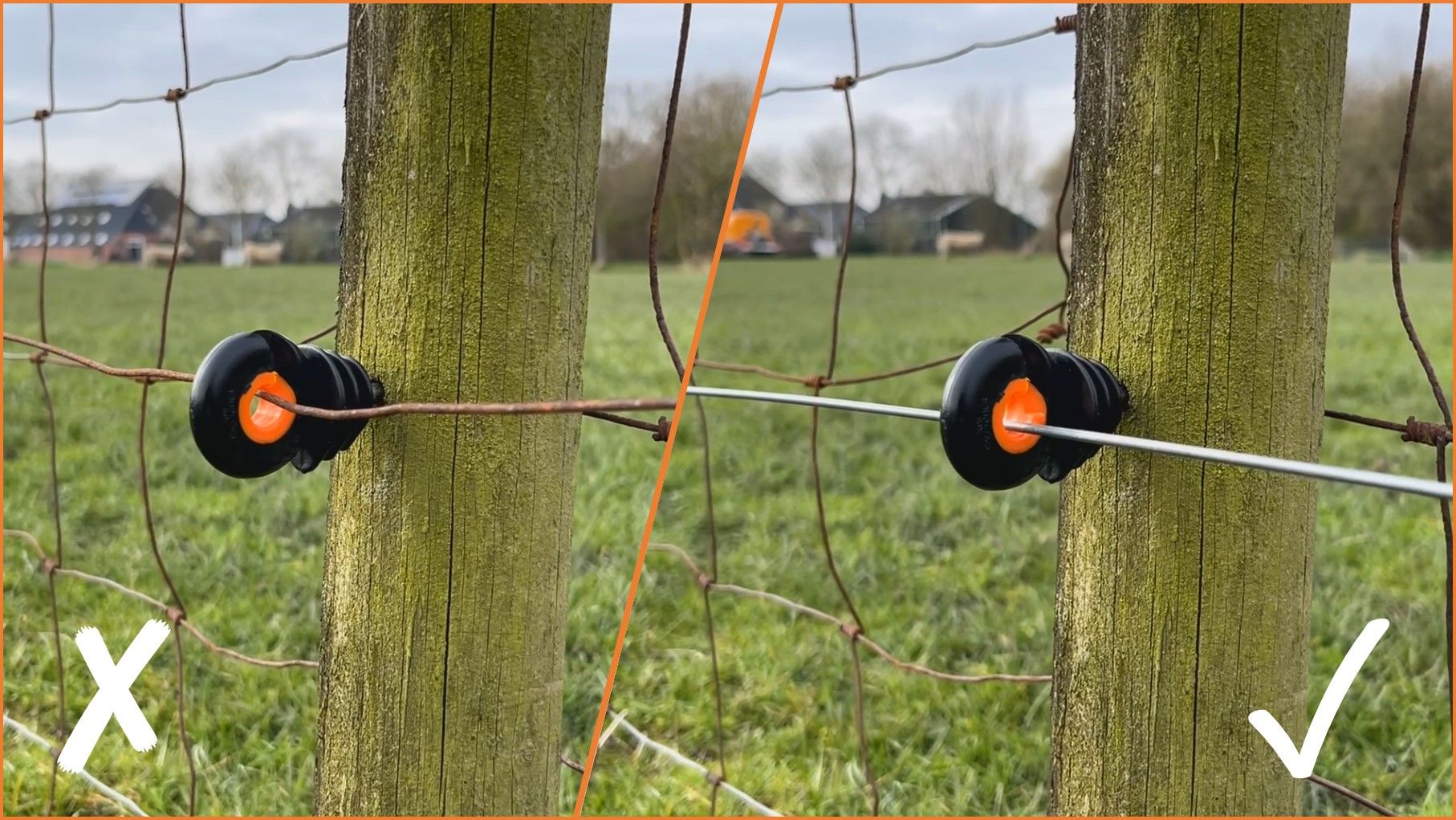
1. Rusty wires or gate handles;
Rust is bad for conduction, even if it is superficial. In addition, rust often quickly spreads to other components.
2. Wrong connections;
Electric fences are often knotted to each other. These knots cause poor conductivity. Therefore, always use a suitable fence wire joiner or replace the wire. Also, wrong connections sometimes cause sparks. These sparks damage the fence and cause it to rust faster.
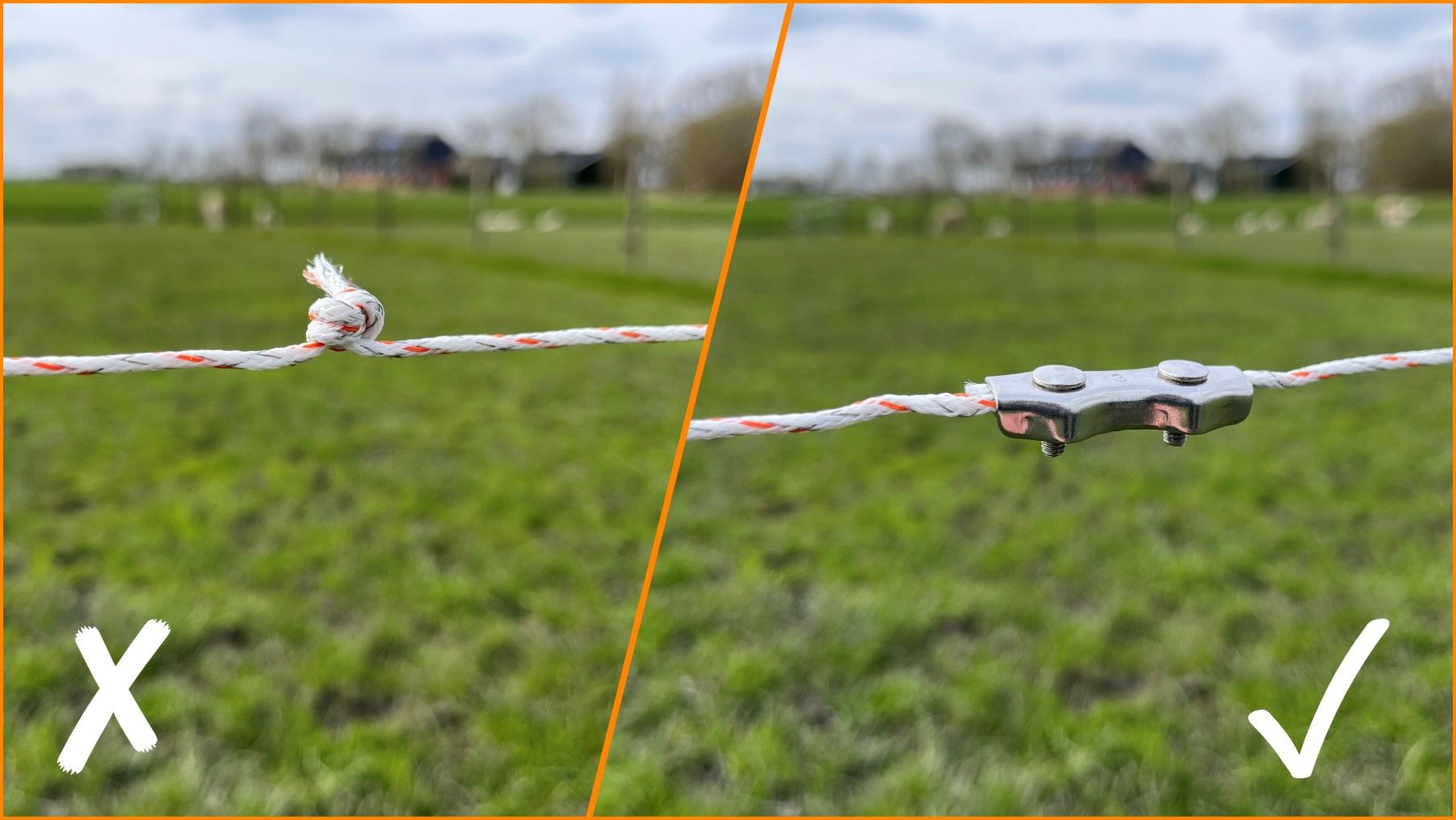
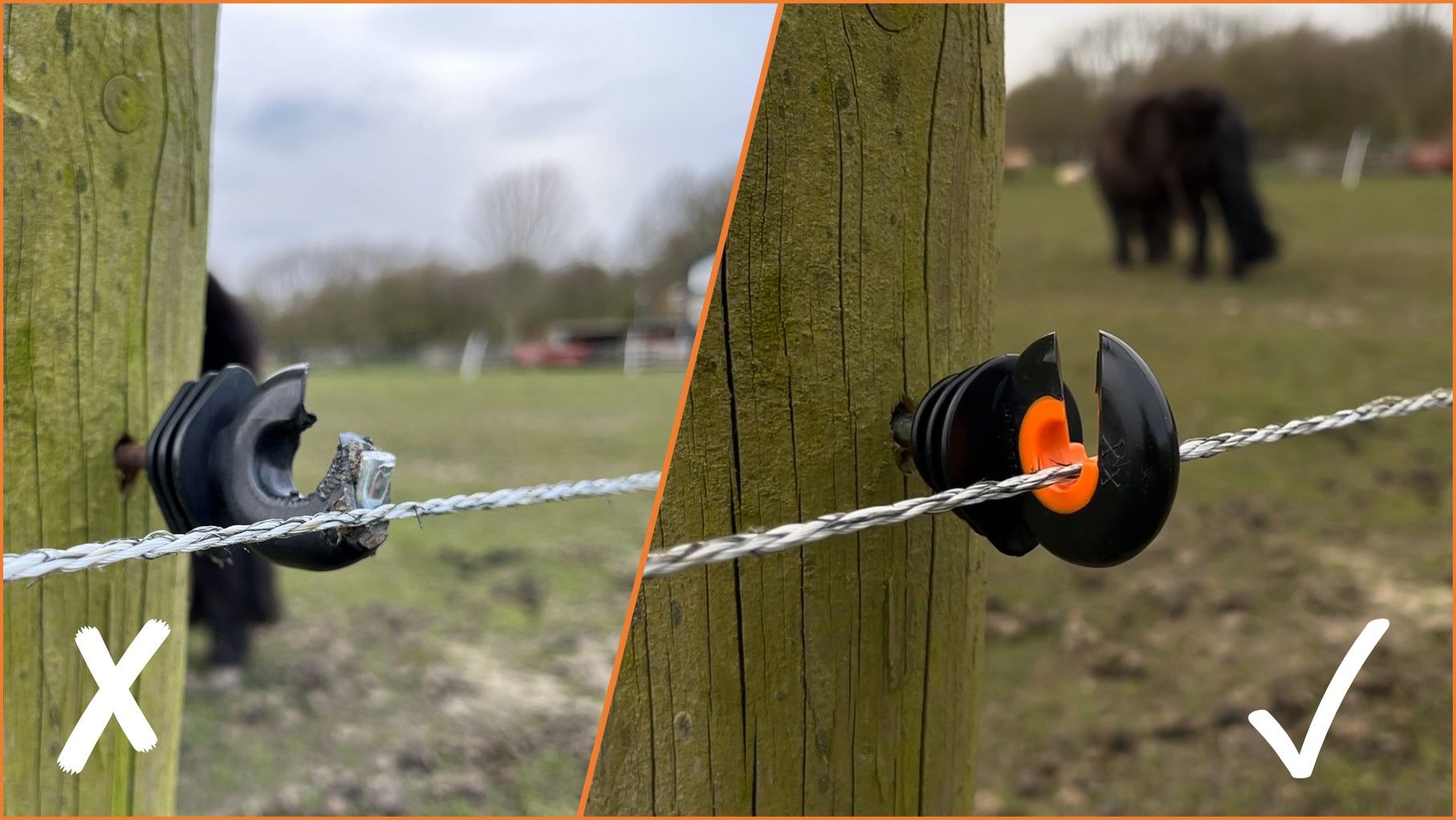
3. Broken or worn insulators;
This creates a hard short circuit and hence loss of voltage.
4. Too much vegetation against the wire;
Each blade creates a small short circuit and thus a lower voltage. A little vegetation against the wire should not be a problem, provided the energiser is strong enough.
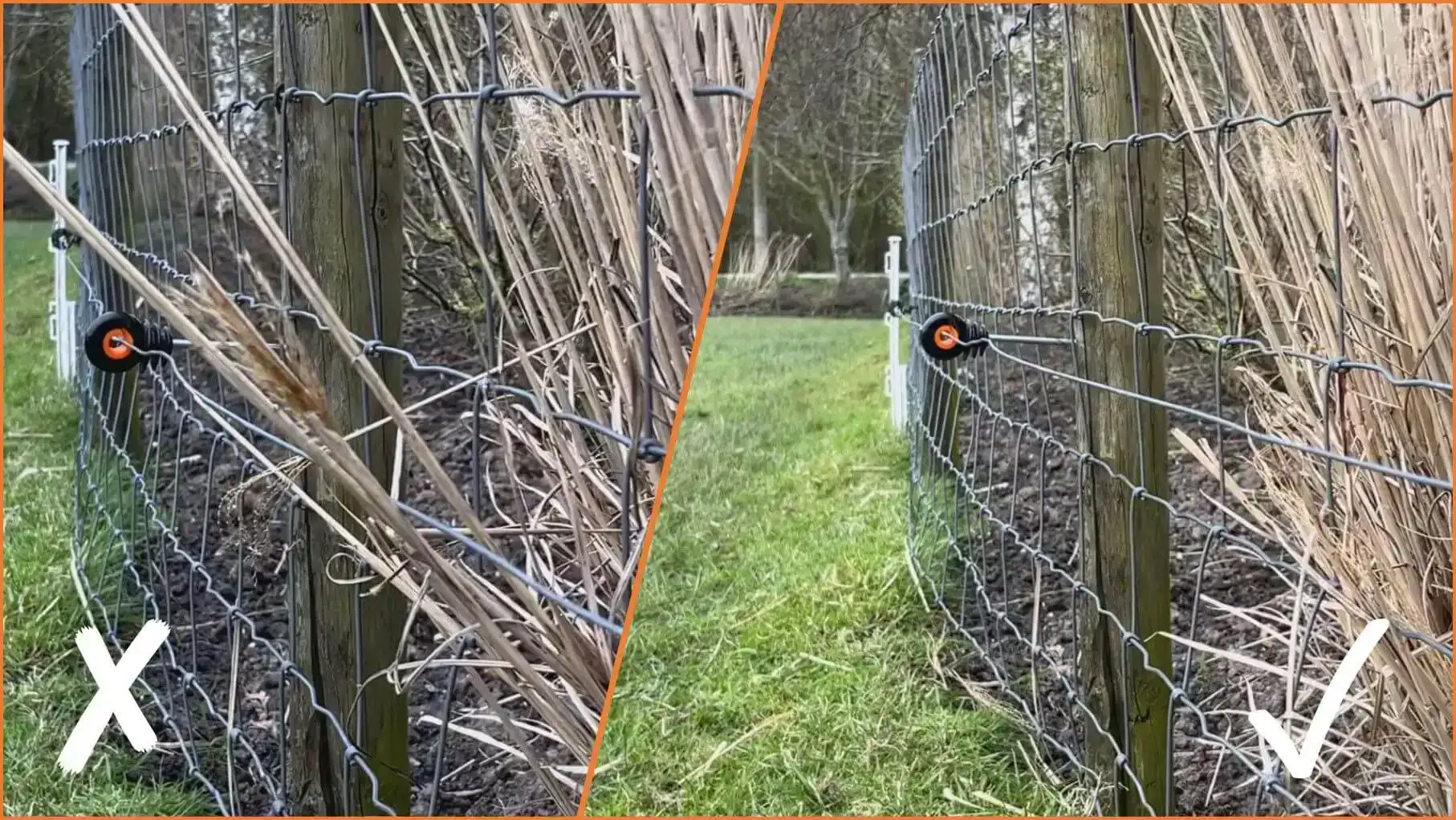
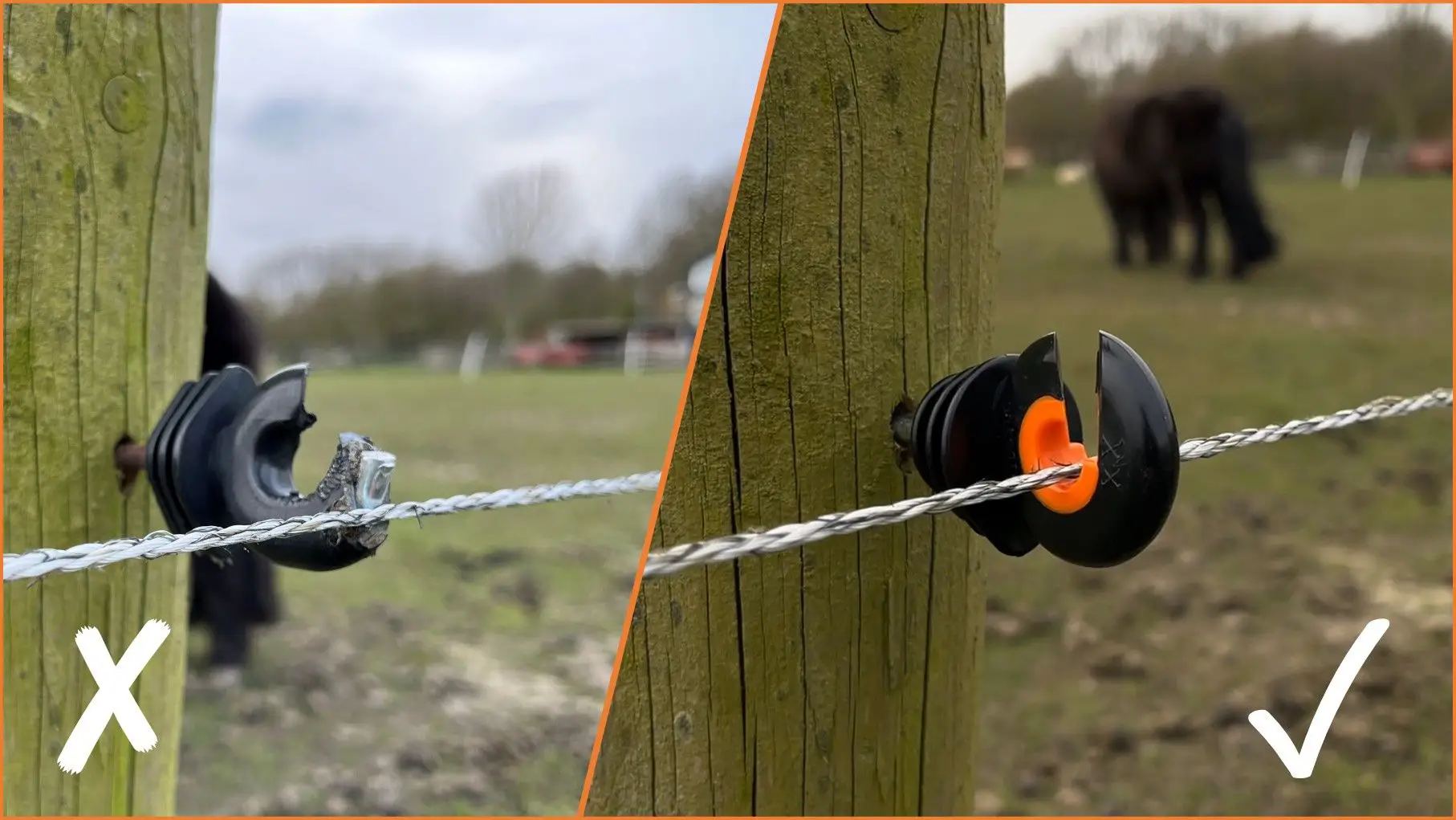
5. No ground cable or gate handle anchor at a gateway;
Gallagher recommends using a suitable ground cable under each fixed gateway. This is best for conduction and safest for the animal. In practice, this is not possible for every gateway. In that case, do use a gate handle anchor. Often, the gate handle is hung in a loop of electric fence. This creates a smaller contact surface and therefore less conduction.
